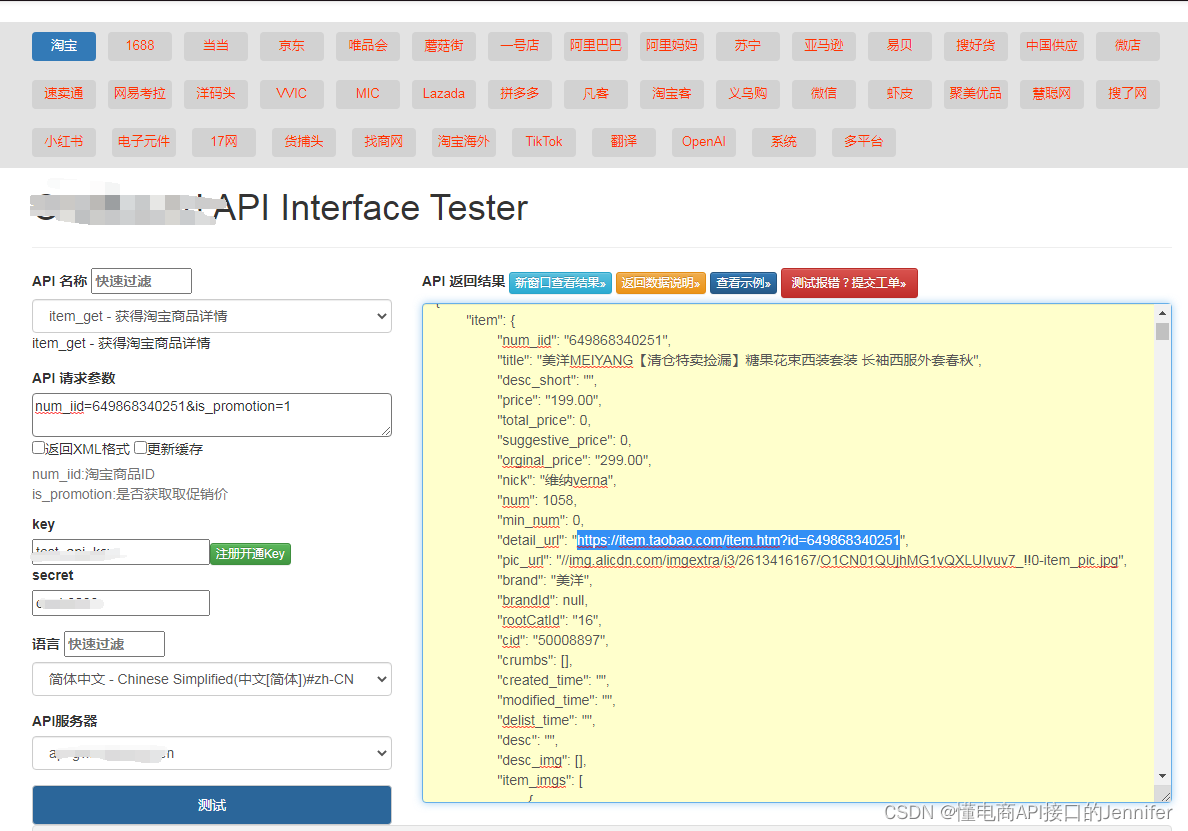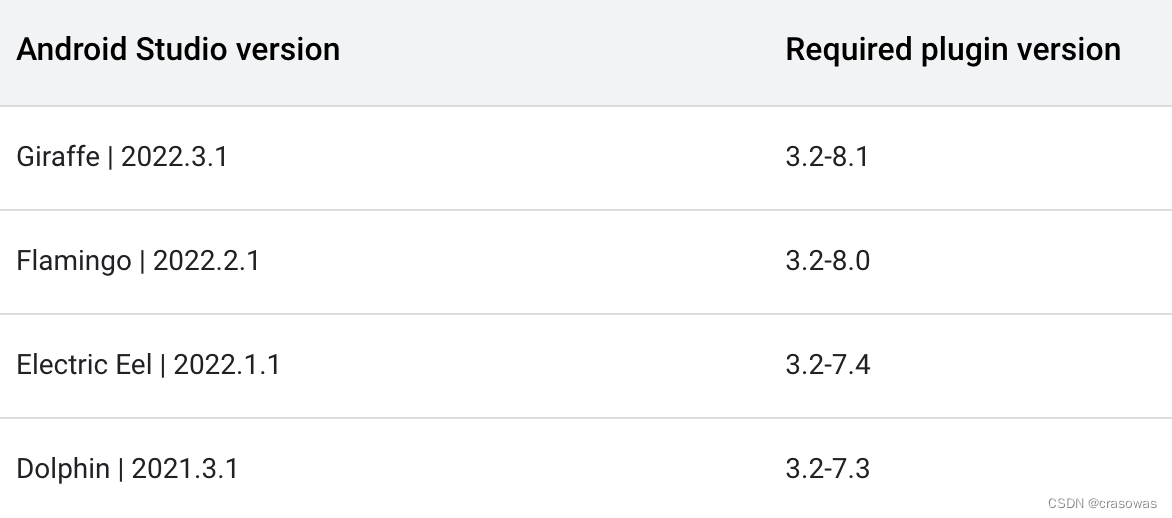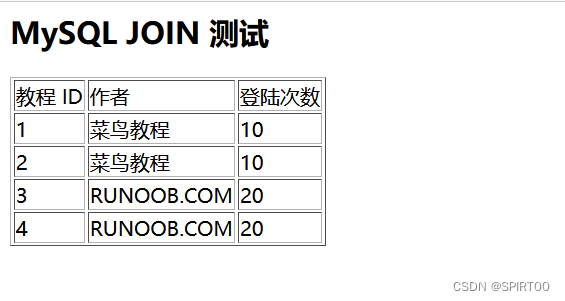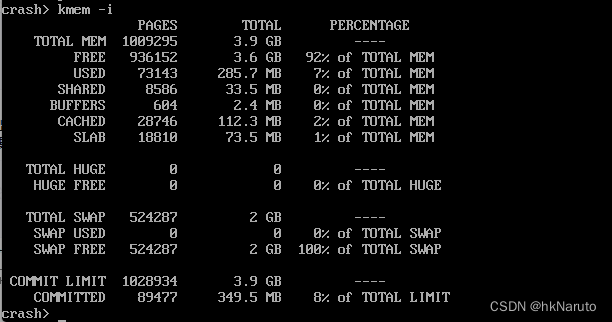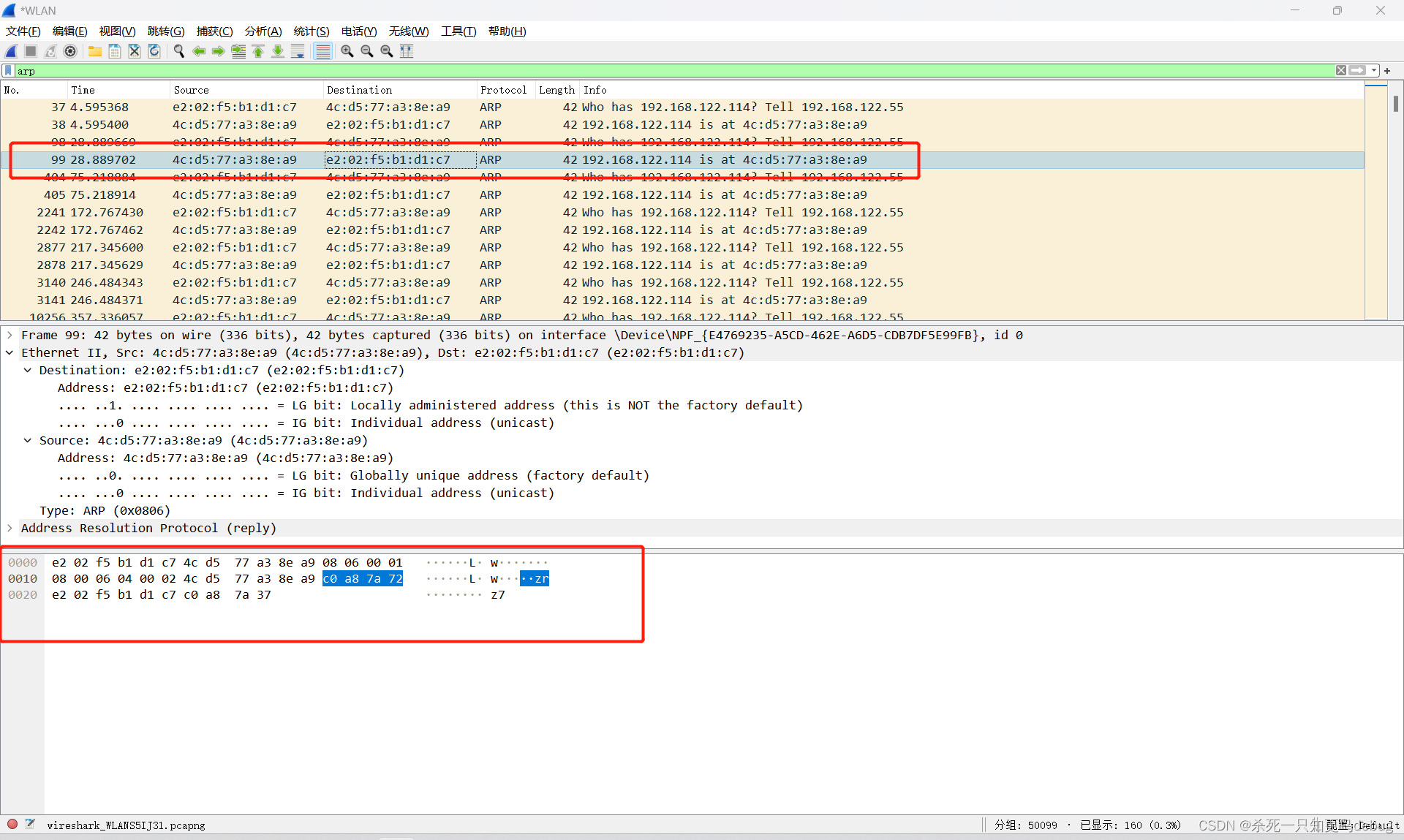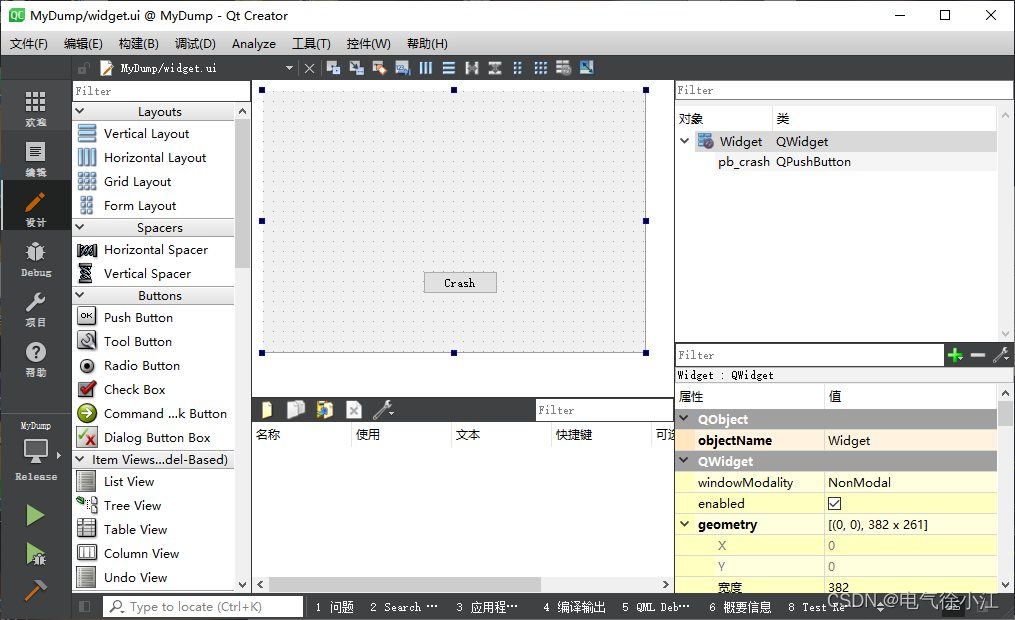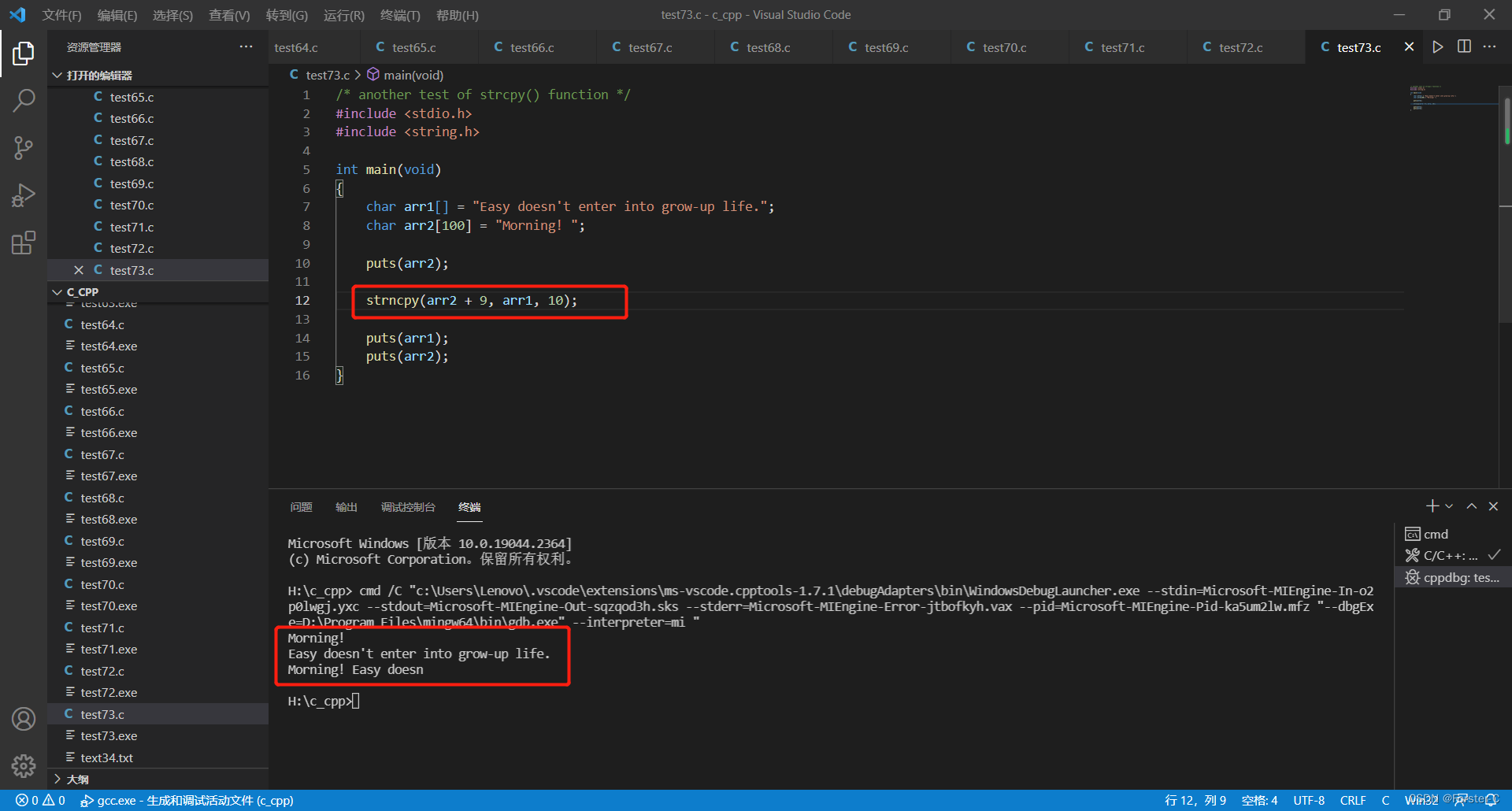目录
1. 进程创建
2. 进程终止
3. 进程常见的退出方法
4. 进程等待
5. 进程等待的方法
6. 获取子进程status
Linux🌷
1. 进程创建
fork 函数初识
使用方法:
#include <unistd.h>
pid_t ret = fork(void);
//fork函数是有返回值的,返回值为pid_t类型,我们用ret来接收返回值;
//子进程中返回0,父进程返回子进程的PID,出错则返回-1;创建一个进程,意味着要为该进程创建task_struct、mm_struct、页表、代码、数据
- 分配新的内存块和内核数据结构给子进程;
- 将父进程部分数据结构内容拷贝至子进程(子进程的创建是以父进程为模板);
- 添加子进程到系统进程列表当中;
- fork返回,开始调度器调度;
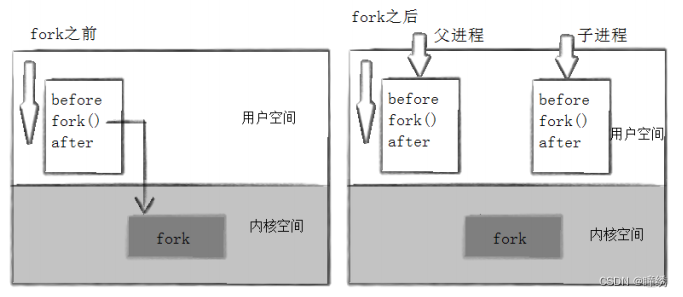

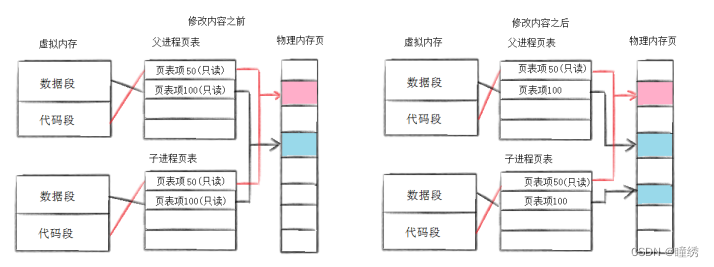
- 系统中有太多的进程(创建进程需要时间 + 空间的消耗);
- 实际用户的进程数超过了限制;
2. 进程终止
进程退出的三种情况:
- 代码运行完毕,结果正确;
- 代码运行完毕,结果不正确;
- 代码异常终止;
我们写代码时,总是在最后加return 0,其实这个0便称为退出码,该进程的退出码会被父进程获
取;
main函数,return 值,该值为退出码;非main函数,该值为函数返回值;
在退出码时:我们一般用0表示结果正确,用!0表示结果不正确;
代码异常终止:也就是我们所说的,在程序还没有运行完,程序便终止—>程序崩溃,在此时,退
出码是没有意义的。
我们平常使用的ctrl c便是一种用信号控制的异常退出;
查看退出码:
若进程是正常终止:代码运行完(正确/不正确),可以通过如下命令查看进程退出码:
echo $?注意:此语句只能查看最近一次进程退出时的退出码;
3. 进程常见的退出方法
- main函数的return n语句;
- 调用exit函数(该语句同return n语句功能无差别);
- 调用_exit函数;
1. return n:
2. exit函数:
//用法
exit(参数);
//exit里面的参数为:退出码;
//调用exit则表示该进程退出;
//exit在任意地方都可以调用,代表终止进程;3. _exit函数:
//用法同exit()函数相同只不过不做后续收尾工作:
//例如: 关闭所有打开的流,所有的缓存数据均被写入等
_exit(参数);exit同_exit的区别:
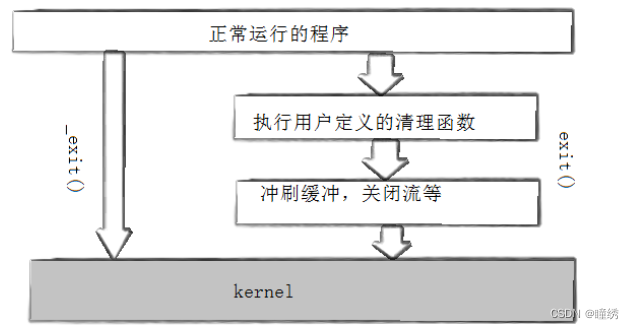
用一个示例进行验证:
1. return退出:对缓冲区进行了刷新;

2. exit退出:对缓冲区进行了刷新;
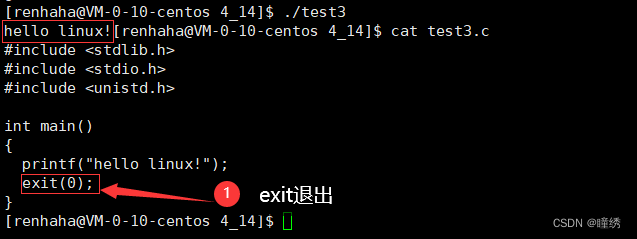
3. _exit退出:没有对缓冲区进行刷新;
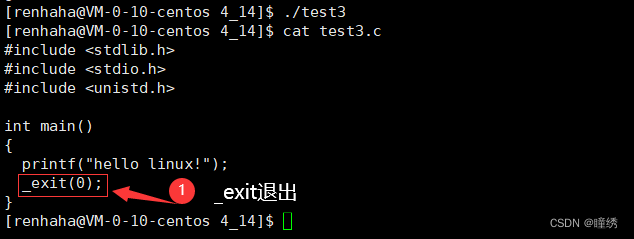
进程退出的含义:
在OS层面:少了一个进程,free task_struct、free mm_struct、free 页表及各种映射关系,代码及
数据申请的空间也释放掉;
4. 进程等待
进程等待的必要性:
5. 进程等待的方法
#include<sys/types.h>
#include<sys/wait.h>
pid_t wait(int* status);
//返回值:成功则返回被等待进程pid,失败返回-1。
//参数:输出型参数,获取子进程退出状态,不关心则可以设置成为NULLwaitpid方法
pid_ t waitpid(pid_t pid, int *status, int options);
//返回值:
// 当正常返回的时候waitpid返回收集到的子进程的进程ID;
// 如果设置了选项WNOHANG,而调用中waitpid发现没有已退出的子进程可收集,则返回0;
// 如果调用中出错,则返回-1,这时errno会被设置成相应的值以指示错误所在;
//参数:
// pid:Pid=-1,等待任一个子进程。与wait等效。
// Pid>0.等待其进程ID与pid相等的子进程。
//status:
// WIFEXITED(status): 若为正常终止子进程返回的状态,则为真。(查看进程是否是正常退出)
// WEXITSTATUS(status): 若WIFEXITED非零,提取子进程退出码。(查看进程的退出码)
//options:
// 0:阻塞等待;
// WNOHANG: 非阻塞等待:若pid指定的子进程没有结束,则waitpid()函数返回0,不予以等待。
// 若正常结束,则返回该子进程的ID。- 如果子进程已经退出,调用wait/waitpid时,wait/waitpid会立即返回,并且释放资源,获得子进程退出信息。
- 如果在任意时刻调用wait/waitpid,子进程存在且正常运行,则进程可能阻塞。
- 如果不存在该子进程,则立即出错返回。
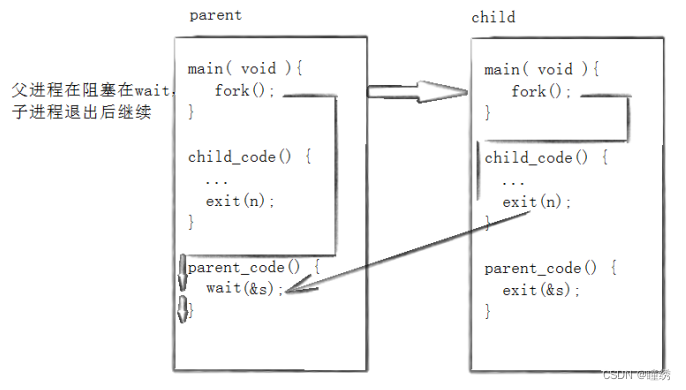
6. 获取子进程status
- wait和waitpid,都有一个status参数,该参数是一个输出型参数,由操作系统填充。
- 如果传递NULL,表示不关心子进程的退出状态信息。
- 否则,操作系统会根据该参数,将子进程的退出信息反馈给父进程。
- status不能简单的当作整形来看待,可以当作位图来看待,具体细节如下图(总共32位,只研究status低16比特位):

用代码的方式更好理解:
1. 父进程堵塞等待子进程:
#include <stdio.h>
#include <unistd.h>
#include <string.h>
#include <sys/types.h>
#include <sys/wait.h>
int main()
{
pid_t id = fork(); //创建子进程;
if(id==0)
{
//child
int cnt = 5;
while(cnt)
{
printf("child[%d] is running: cnt is : %d\n",getpid(),cnt);
cnt--;
sleep(1);
}
exit(0);
}
if(id>0)
{
//parent
sleep(10);
printf("father wait begin!\n");
//pid_t ret = wait(NULL);
//pid_t ret = waitpid(id,NULL,0); //等待指定的一个进程;
pid_t ret = waitpid(-1,NULL,0); //等待任意一个子进程;此时等价于wait()
if(ret>0)
{
printf("father wait: %d,sucess\n",ret);
}
else
{
printf("father wait failed!\n");
}
}
return 0;
}
2. 对于status的使用:
位操作的使用:
#include <stdio.h>
#include <stdlib.h>
#include <unistd.h>
#include <sys/types.h>
#include <sys/wait.h>
int main()
{
pid_t id = fork();
if(id==0)
{
//child;
int cnt=3;
while(cnt)
{
printf("child[%d] is running: cnt id:%d\n",getpid(),cnt);
cnt--;
sleep(1);
}
exit(10);
}
if(id>0)
{
//parent
printf("father wait begin!\n");
int status=0;
pid_t ret = waitpid(id,&status,0);
if(ret>0)
{
printf("father wait: %d, sucess, status exit code: %d, status exit signal:%d\n",ret,(status>>8)&0xFF,status&0x7F);
}
else
{
printf("father wait failed!\n");
}
}
return 0;
}
此处signal若为0:代表正常退出,否则为异常退出;
在正常退出时,exit code:退出码才是有意义的;
一般情况下,退出码为0则表示正常退出,结果正确。
宏的使用:
#include <stdio.h>
#include <stdlib.h>
#include <unistd.h>
#include <sys/types.h>
#include <sys/wait.h>
int main()
{
pid_t id = fork();
if(id==0)
{
//child
int cut=3;
while(cut)
{
printf("child[%d] is running ,cut is :%d\n",getpid(),cut);
cut--;
sleep(1);
}
}
else if(id>0)
{
//parent
printf("father wait begin!\n");
int status=0;
pid_t ret = waitpid(id,&status,0);
if(ret>0)
{
if(WIFEXITED(status)) //没有收到任何退出信号的
{
//正常结束的,获取对应的退出码
printf("exit code: %d\n",WEXITSTATUS(status)); //不用进行位操作,提供了对应的宏
}
}
}
return 0;
}

宏的内部实现:
*status_p |= (exit_code<<8);
*status_p |= signal;
父进程阻塞等待子进程:
上述位操作便是阻塞等待的例子。
父进程非阻塞等待子进程:
#include <stdlib.h>
#include <stdio.h>
#include <unistd.h>
#include <sys/types.h>
#include <sys/wait.h>
#include <string.h>
int main()
{
pid_t id = fork();
if(id==0)
{
//child
int cut=3;
while(cut)
{
priintf("child[%d] running, cut is : %d",getpid(),cut);
cut--;
sleep(1);
}
}
if(id>0)
{
//parent
int status=0;
while(1)
{
pid_t ret = waitpid(id, &status, WNOHANG);
if(ret==0)
{
//子进程没有退出,但是waitpid等待成功,需要父进程重复等待
printf("DO father things!\n");
}
else if(ret>0)
{
//子进程退出了,waitpid也成功了,获取到了对应的结果
printf("father wait: %d,success, status exit code: %d, status exit signal: %d\n",ret,(statu s>>8)&0xFF,status&0x7F);
break;
}
else
{
//ret<0
//等待失败
perror("waitpid failed!\n");
break;
}
}
}
return 0;
}
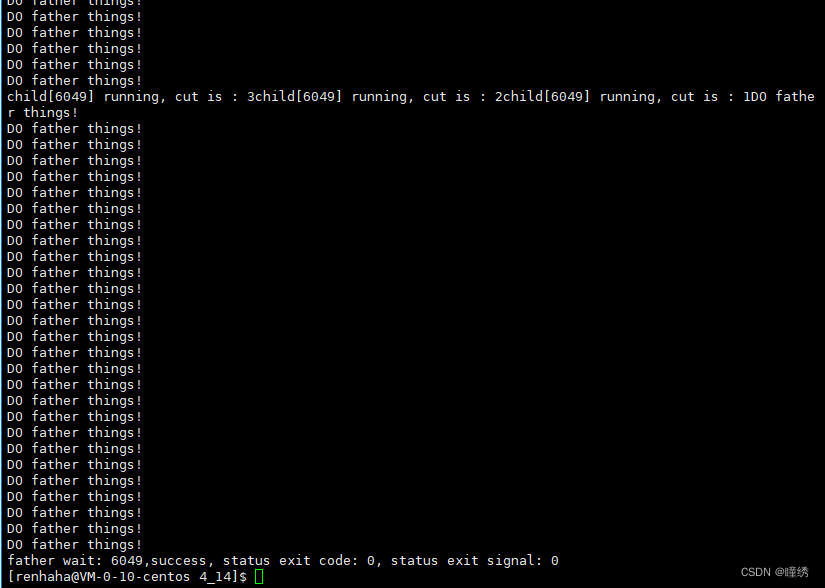
子进程运行了3秒,父进程询问子进程后,做自己的事情,打印出来这么多父进程的语句,这也反
映了,CPU的运行速度是很快的,只需要3秒便可以做很多事情。
坚持打卡!😃



